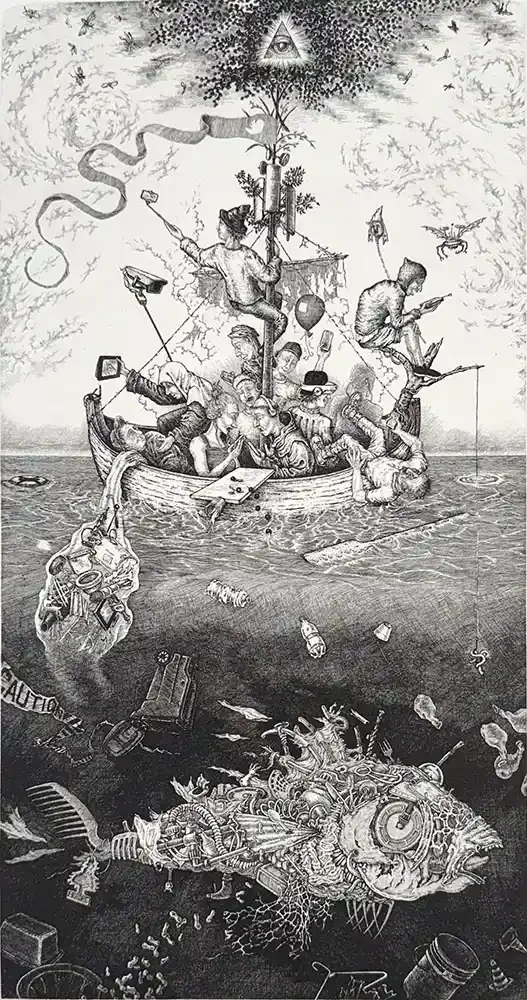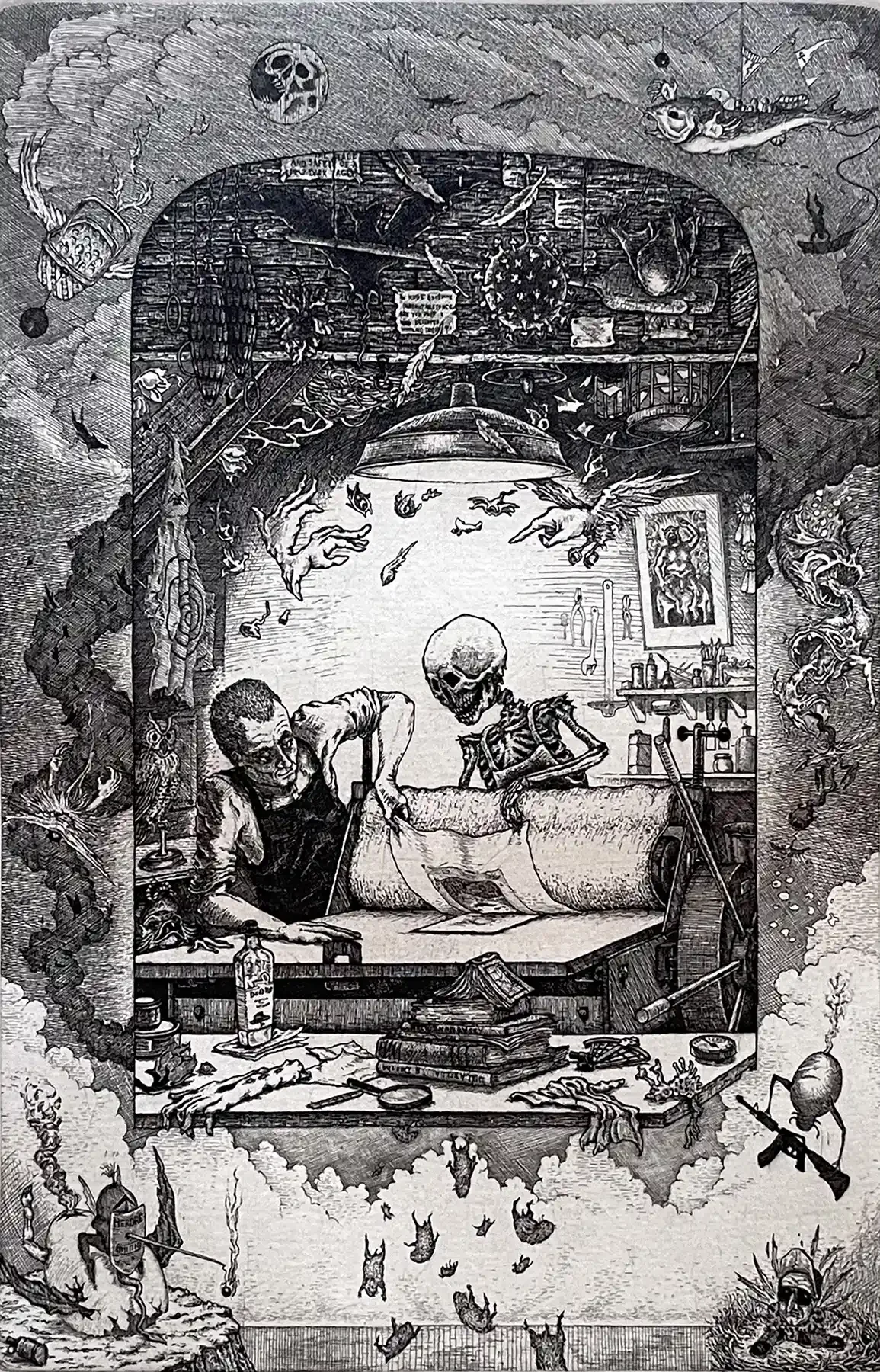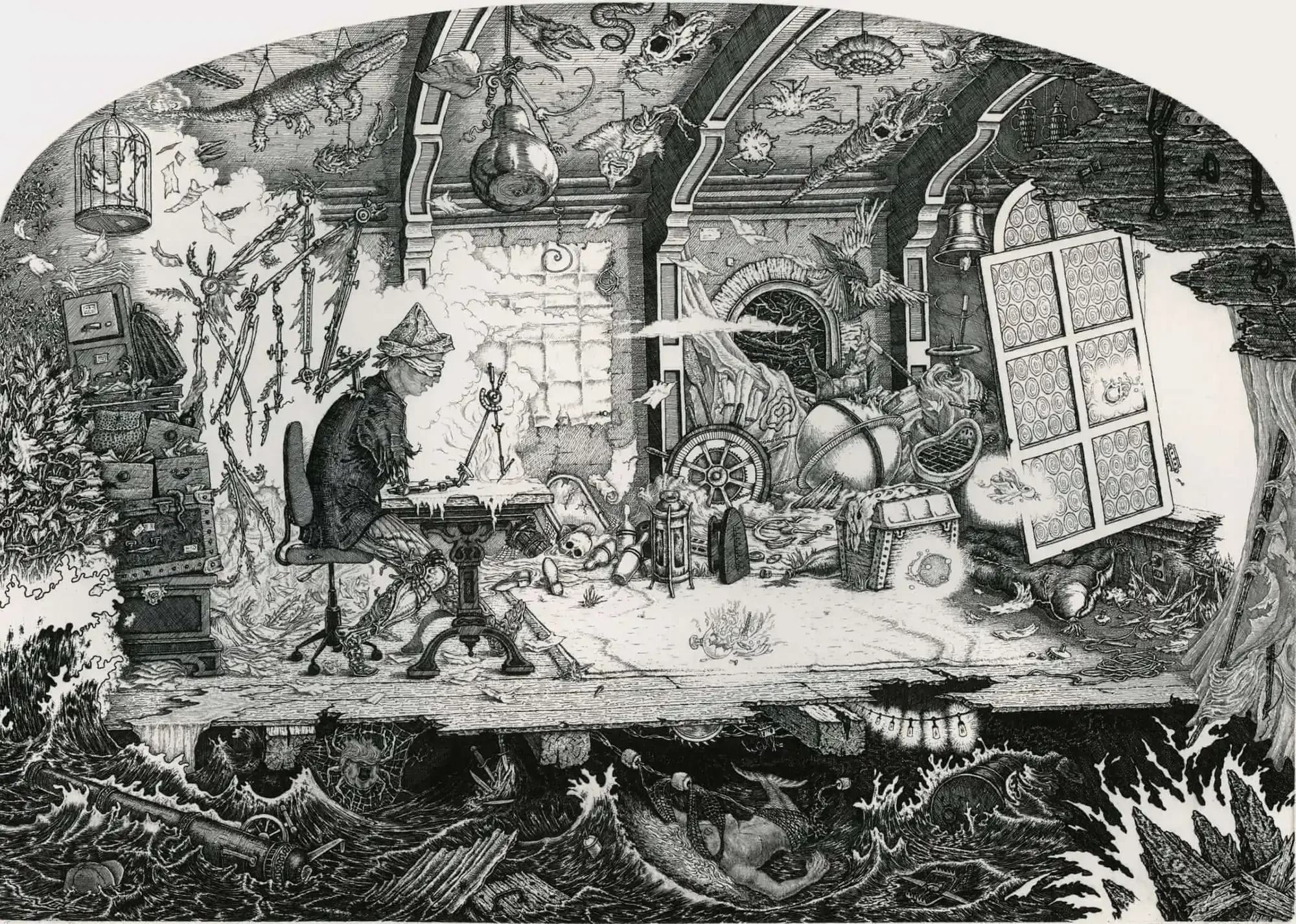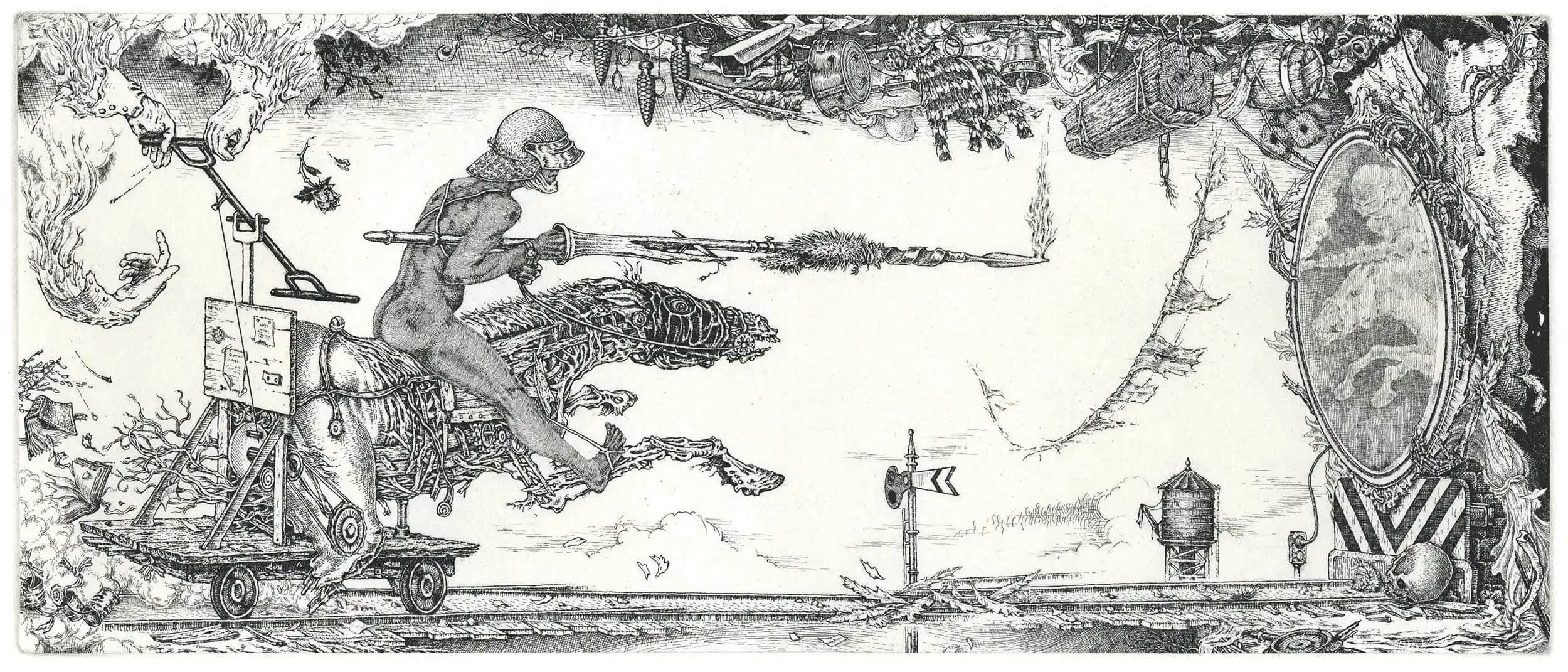Juan Quezada - pottery and biography

By: David Avery
Medium: etching
Year: 2013
Edition of 21
Image Size: 27.75 x 5 inches
Obeliscolychny was invented/appropriated by Francois Rabelais (1483-1553) and used in books IV and V of his sprawling tales of Gargantua and Pantagruel. Used to describe a kind of spit used by soldiers to hang lamps on, it acquired the meaning somewhere along the way of a lighthouse in the form of an obelisk. This print is available on its own, or as a part of this fine press book, where it unfolds once opened.

Juan Quezada
Juan Quezada Celado (1940–2022) is widely celebrated as the visionary who revived the ancient ceramic traditions of Paquimé and transformed the remote village of Mata Ortiz, Chihuahua, into one of the most important centers of contemporary ceramic art. Entirely self-taught, Quezada began in the 1970s by collecting ancient shards in the hills surrounding his hometown. Studying their forms, slips, and firing methods by trial and error, he gradually reconstructed the lost techniques of Casas Grandes pottery and then reimagined them with a distinctly modern refinement.
Working without a wheel, Quezada hand-coiled each vessel using locally sourced clay, often burnishing the surfaces with a smooth stone before applying mineral pigments. His bold geometric patterns, fluid line work, and perfectly balanced forms soon drew the attention of collectors and anthropologists in the United States. By the early 1980s, his work was being exhibited internationally, and Quezada became the acknowledged founder of what is now called the Mata Ortiz pottery movement.
One of Quezada’s most enduring contributions was his decision to teach others in his community—including siblings, children, and neighbors—the techniques he had painstakingly rediscovered. This mentorship transformed Mata Ortiz from an isolated rural village into a thriving artistic center, with more than 300 active potters working in a broad range of styles. Yet even within this flourishing movement, Juan Quezada’s pieces remain unmistakable: characterized by their elegant symmetry, flawless surfaces, and extraordinary control of fine painted line.
Major museums, including the Smithsonian Institution, the Museum of Mankind in London, and numerous American collections, have acquired Quezada’s ceramics. He received Mexico’s National Prize for Arts and Sciences in 1999, the country’s highest honor for artistic achievement.
Today, Juan Quezada’s pottery is admired not only for its technical mastery and aesthetic presence but also for its cultural significance. His work represents a rare and successful revival of an ancestral art form—one that bridges ancient tradition and contemporary vision through craftsmanship of exceptional sensitivity.
























